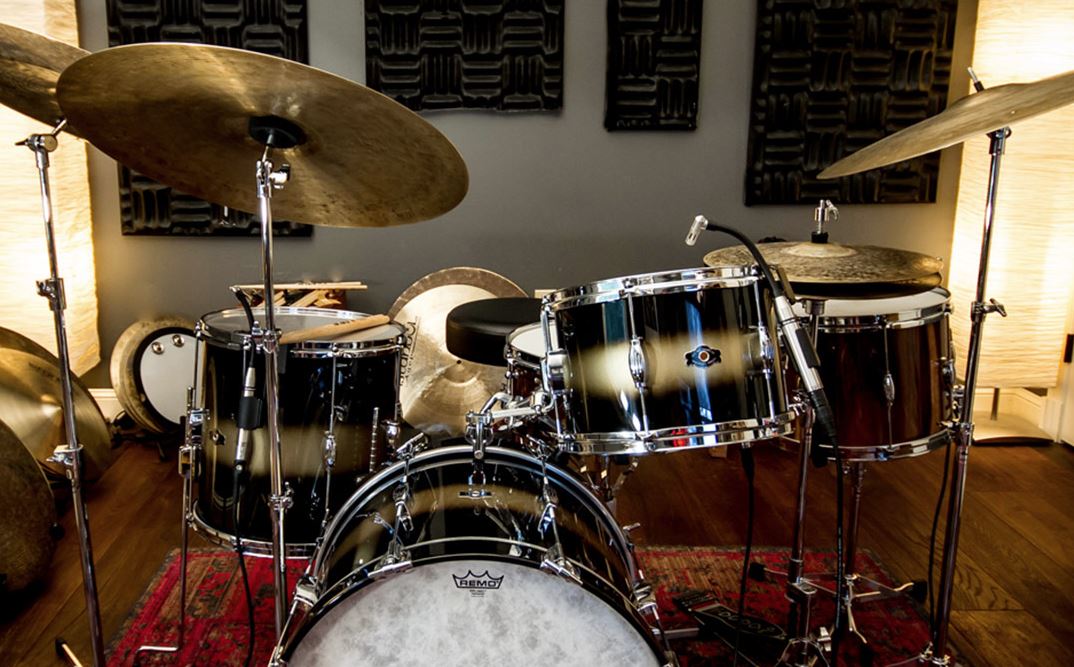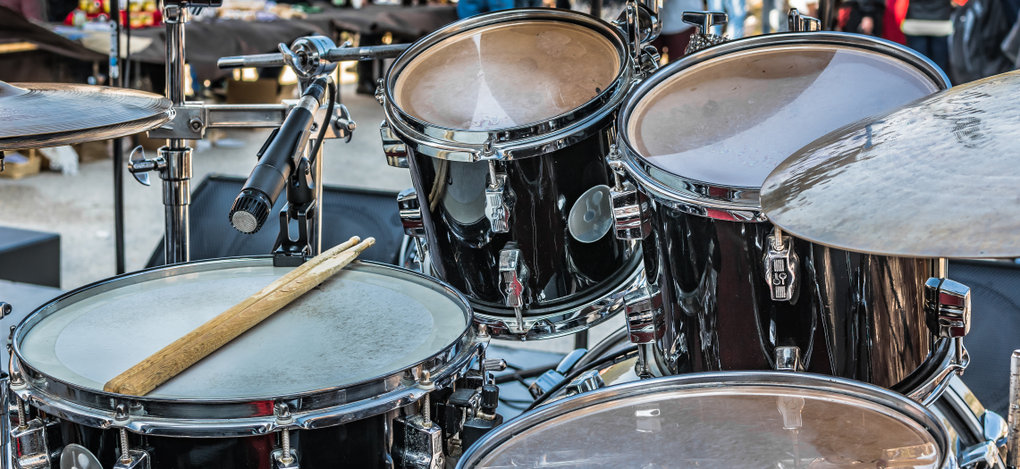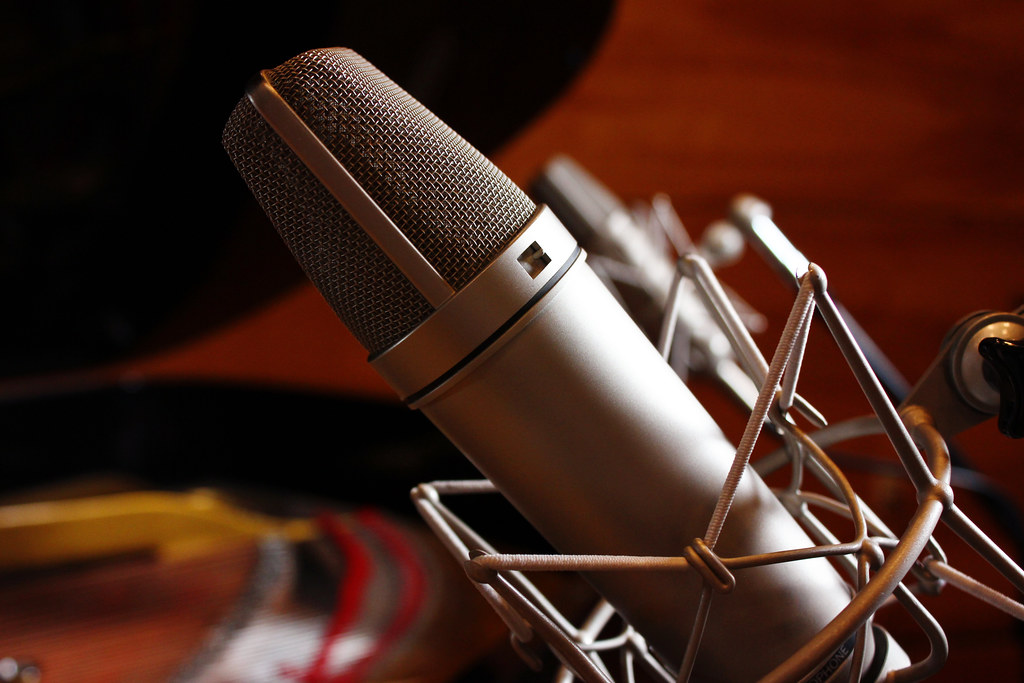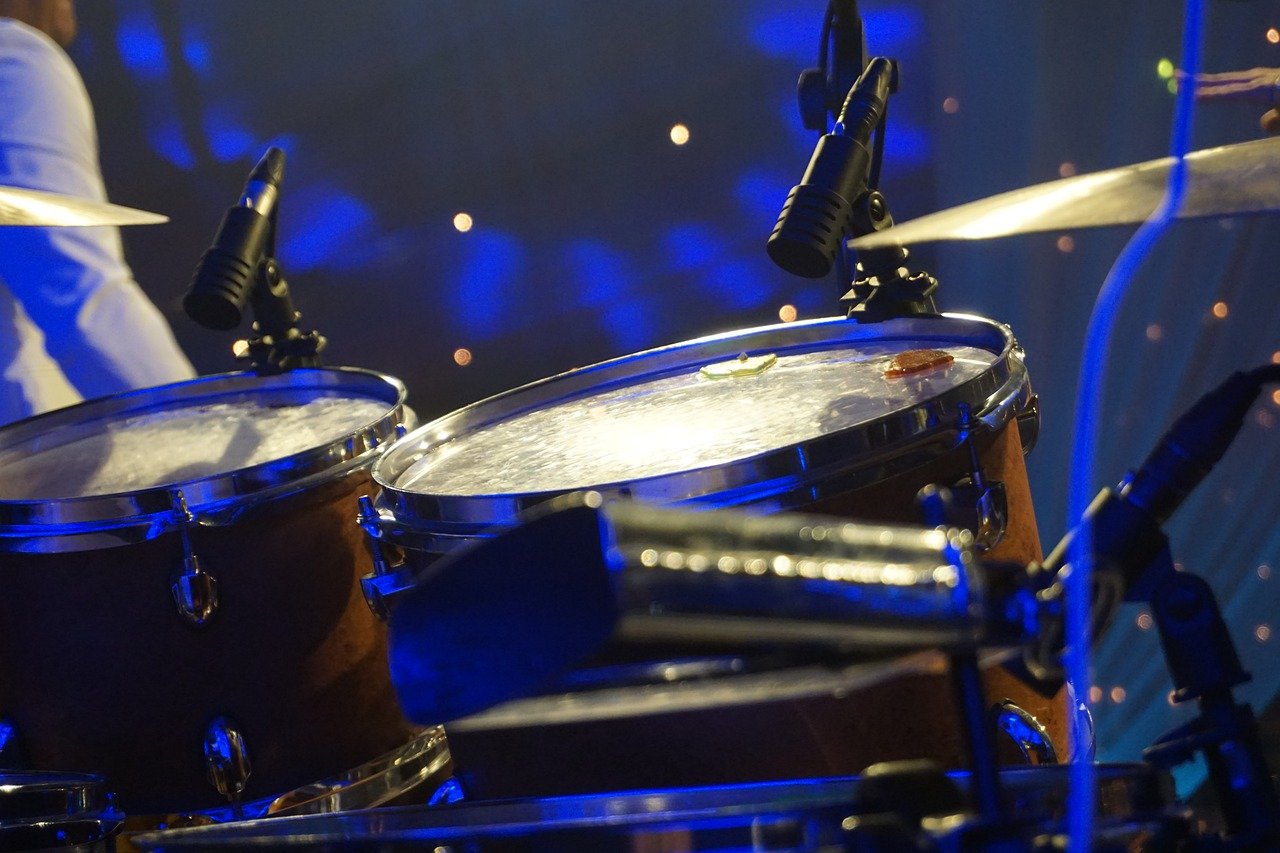The 7 Best Hi-Hat Mics for All Budgets (2024)
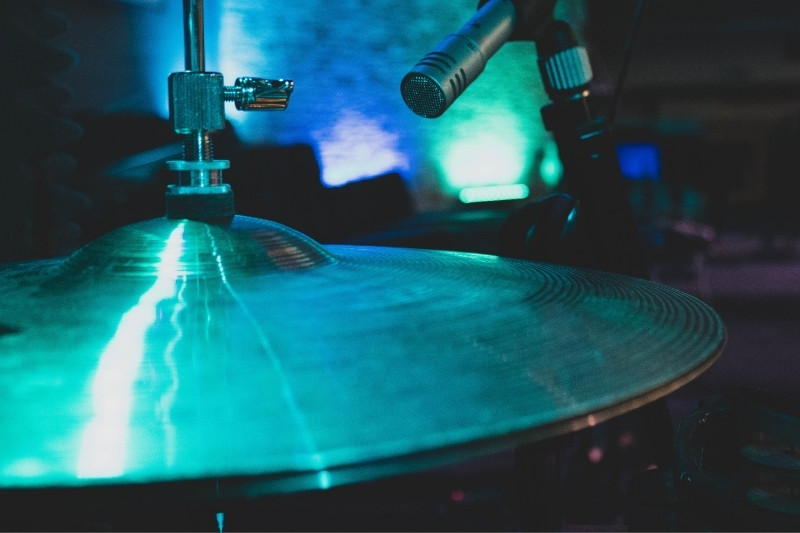
Cardioid condenser microphones are recommended as the best types of mics for hi-hats, while omnidirectional mics also do the job pretty well. Hi-hats have a rich sound, and fast transients, and form a vital part of your drum kit, so you need a mic that will do it justice.
My main recommended product is the Shure SM81 Cardioid Condenser. It is a high-performance, professional mic that is built to last.
My second recommended product is the Behringer B-5 Condenser Microphone. A great budget microphone to get your money’s worth.
Contents
- The 7 Best Hi-Hat Mics (2024)
- 1. Shure SM81
- 2. Behringer B-5
- 3. Neumann KM184
- 4. Audio-Technica AT2021
- 5. Rode M3
- 6. AKG P170 Small-Diaphragm
- 7. Audio-Technica AT4041
- Do you need a hi-hat mic?
- What type of mic do you need for a hi-hat?
- How many hi-hat mics do you need?
- How do you properly position your hi-hat mics?
- How does a hi-hat mic improve your sound and performance?
- What size of hi-hat mic do you need?
- Verdict
The 7 Best Hi-Hat Mics (2024)
Let’s compare these in more detail.
1. Shure SM81
The Shure SM81 is a cardioid condenser microphone and offers an incredible studio recording experience. It is great for recording acoustic guitars and pianos but works exceptionally well for hi-hats as well.
Pros
- High, professional-quality performance
- Very durable
- Low noise and distortion
Cons
- A bit pricey
The Shure SM81 has a cardioid polar pattern with a uniform frequency. It has a wide frequency response, ranging from 20 to 20,00 Hz. It also picks up very low noise and low distortion. Additionally, its high output and flat response curve ensure a natural reproduction of the sounds you intend to produce.
The mic requires a phantom cable and works best with a 48 VDC supply. So, make sure you take care of the power requirements. The SM81 sports a rugged, metallic construction. It can withstand humidity and harsh conditions, so you know it will last you a while.
| Battery Powered | No |
| Includes Clamp | Yes |
| Polar Pattern | Cardioid |
| Switchable Lowcut | Yes |
| Switchable Pad | NA |
It is moderate in weight and comes with a clip, box, windscreen, etc. So, you can keep it safe and carry it along to pretty much anywhere.
2. Behringer B-5
The Behringer B-5 is another brilliant condenser microphone that offers pro-level quality for recording your hi-hats. It is a very nice choice for home studios considering its output and the affordable price it carries.
Pros
- An affordable option
- Interchangeable polar patterns
- Switchable low cut and input attenuation
Cons
- The sound quality doesn’t match the higher-range mics on this list.
At such an amateur price, the Behringer B-5 is one of the few microphones that comes with two interchangeable capsules, omnidirectional and cardioid. So, you can change the settings according to the kind of recording you will be doing.
Thanks to its gold sputtering, it delivered clean natural sounds. It is also capable of picking up loud signals sans distortion and filtering out the low ends of any turbulence it encounters.
| Battery Powered | No |
| Includes Clamp | Yes |
| Polar Pattern | Omnidirectional & Cardioid |
| Switchable Lowcut | Yes |
| Switchable Pad | Yes |
All in all, it’s a really nice microphone to record your hi-hats in your home studio without shelling out a lot of money.
3. Neumann KM184
If you want a genuine high-end studio mic that will do your hi-hats the justice they deserve, then you don’t have to look past the Neumann KM184.
Pros
- Professional-quality recording
- Brilliant high-level response
- Usable for any occasion
Cons
- A bit pricey
- No switchable low-cut or attenuation
This is a very nice mic that can be used anywhere you wish to record. It makes your hi-hats sound concise, clear, and crisp. The tone it produces is warm with a lot of depth to it. You probably won’t even need any EQ on this.
The KM184 is a condenser microphone with a cardioid polar pattern. It handles high pressures of up to 138 dB SPL seamlessly. This means you can play your hi-hats as loud as you want and the mic will still pick up all the nuances. It also deals with handling noise without fault.
| Battery Powered | No |
| Includes Clamp | Yes |
| Polar Pattern | Cardioid |
| Switchable Lowcut | No |
| Switchable Pad | No |
The Neumann KM184 may be an expensive mic, but if you don’t have any limits to your budget, it’s a great pick for your home or professional studio.
4. Audio-Technica AT2021
The Audio-Technica AT2021 is a very popular and affordable small-diaphragm condenser mic from a respected manufacturer. With a cardioid polar pattern and an extended frequency response, it makes for a suitable option for hi-hats.
Pros
- Affordable mic
- Great sensitivity
- Extended frequency response
Cons
- Not the most durable
- Might be too bright for some
Even though this mic is considered ‘too bright’ for many, some might like it that way. The durability could also be better. That being said, it does offer great off-axis rejection due to the cardioid polar pattern and the extended frequency response is crucial for overhead and hi-hat recording.
Additionally, this mic features a corrosion-resistant, gold-plated XLR connector which is a huge plus that aids longevity. In terms of specs, it has a 30Hz-20kHz frequency response, a 145dB SPL rating, and a -39 dB sensitivity level.
| Battery Powered | No |
| Includes Clamp | Yes |
| Polar Pattern | Cardioid |
| Switchable Lowcut | No |
| Switchable Pad | No |
All in all, this is a very good choice for a hi-hat mic that brings affordability to the table. If you don’t want to spend a lot but get a solid mic, the Audio-Technica AT2021 is a worthy consideration.
5. Rode M3
The Rode M3 is a really nice condenser microphone that you can use to record your hi-hats whether you’re at home, in a studio, or on the stage. It is also quite a versatile mic that can be used for any other instruments you play as well.
Pros
- Can be used for many instruments
- Is battery and phantom-powered
- Rejects handling noise really well
Cons
- Not the most dynamic
The mic has an omnidirectional polar pattern, so once you point it toward your hi-hat, the input will solely focus on it. It also does a great job of filtering out background low-ends and handling noise.
Since the Rode M3 is a condenser mic, it requires phantom power to operate. However, there is a slot for a 9V battery, which is always a plus to have especially when you’re on the road.
| Battery Powered | Yes |
| Includes Clamp | Yes |
| Polar Pattern | Omnidirectional |
| Switchable Lowcut | No |
| Switchable Pad | Yes |
The build quality of this microphone is excellent, featuring an all-metal body. Expect it to last a long time. The mic comes with a pouch, a mount, and a windscreen too.
6. AKG P170 Small-Diaphragm
The AKG P170 is another great microphone that is studio-quality and fairly cost-effective. It’s a small diaphragm condenser mic, weighing just over a pound. So, it’s very convenient to place around your hi-hats.
Pros
- Sturdy and durable design
- Output has great clarity
- Affordable price
Cons
- Not much!
Despite being a small mic, it is very durable. Its body is all-metal after all. It can easily handle daily use, while also accompanying you anywhere on the road without suffering too much wear and tear.
It has an omnidirectional polar pattern. Thanks to its switchable attenuation pad, it is capable of high SPL applications of up to 155 dB. Delivering clear and high-quality sounds, the mic can also be used for several other instruments along with your hi-hats.
| Battery Powered | No |
| Includes Clamp | Yes |
| Polar Pattern | Omnidirectional |
| Switchable Lowcut | No |
| Switchable Pad | Yes |
The AKG P170 has been made with years of experience behind it and delivers top-notch sound at a very reasonable price.
7. Audio-Technica AT4041
The Audio-Technica AT4041 is another entry from the famous brand, this time, from the higher end of the register. This small-diaphragm condenser mic is praised for its sound reproduction capabilities, frequency response, and high impedance levels.
Pros
- Full-spectrum frequency response
- Low-cut filter switch
- Low-noise design
Cons
- A bit pricey
This cardioid polar pattern mic has a full-spectrum frequency response (20Hz-20kHz), a 145dB max SPL rating, and an impedance level of 100 ohms. Not only that, but it also features a low-cut filter switch and a transformer-less design for low self-noise.
Naturally, it does require +48V phantom power for operation but it is incredibly useful for recording purposes, especially hi-hats.
| Battery Powered | No |
| Includes Clamp | Yes |
| Polar Pattern | Cardioid |
| Switchable Lowcut | Yes |
| Switchable Pad | No |
If you’re looking for a pro-grade option for professional recordings, the Audio-Technica AT4041 is an option to look into. Granted, the price is a bit steep but the value you get is up to par.
Do you need a hi-hat mic?
This is a debatable topic as many drummers deem hi-hat mics unnecessary. This is because hi-hats have a high enough frequency that they cut through overhead mics and sound just fine. However, if your style of playing features a lot of hi-hats, you would want your hi-hats to really shine. Then, a hi-hat mic may be the way to go.
What type of mic do you need for a hi-hat?
Good hi-hat mics should be able to filter out noise and handle high-pressure SPL well. As such, small diaphragm condenser mics with a cardioid or super-cardioid polar pattern make for very nice hi-hat mics.
How many hi-hat mics do you need?
If you’ve decided that just overhead mics won’t be enough to record your hi-hats, then using a ha-hat mic is the right choice. As for the number of mics that you may need for your hi-hat, one is more than sufficient to do the job.
That being said, you can also experiment with multiple mics at once. This way, you can create a different sound at the time of mixing.
How do you properly position your hi-hat mics?
A good way to position your hi-hat mic is by placing it around the edge of your hi-hats, at a height of about 5-10 cm from the top cymbal. You also want to make sure that your mic is facing away from the snare as you don’t want to pick up anything other than your hi-hats.
Another helpful tip is to have a stable hi-hat stand as you want as little handling noise as possible.
How does a hi-hat mic improve your sound and performance?
Your hi-hat, along with the snare and bass drum is one of the most essential parts of your drum kit. Naturally, you want it to sound excellent. And hi-hat mics are a great way to go about it.
Placing a mic makes sure that your hi-hat sounds precise and clear and is not muddled between any other sounds. Your playing will have much more clarity with hi-hat mics.
What size of hi-hat mic do you need?
Small diaphragm mics are the best option to record your hi-hats. They pick up clear, natural sounds and are very easy to install and carry around. Plus, they don’t feel bulky against the light nature of hi-hats.
Verdict
Hi-hats are such an important organ of your drum kit that you want it to have its own character when you hear your playing. Placing a mic on your hi-hat can be a great way to ensure that.
My top pick is the Shure SM81 Cardioid Condenser, a high-performance, professional mic that is built to last.
My budget pick is the Behringer B-5 Condenser Microphone, a great budget microphone to get your money’s worth.












